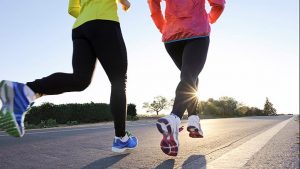
A recent scientific research study was done by the University of Western Australia and published in the American Heart Association’s journal,Hypertension, regarding the correlation between morning exercise and hypertension.
Michael Wheeler, lead author of the study, says that usually studies on exercise and sedentary behaviors have been done separately as far as hypertension, but that they wanted to know how the two impacted each other especially in obese and over-weight people.
The results showed that morning exercise helped in controlling high blood pressure without the use of medication.
The first plan involved 8 hours of uninterrupted sitting, according to Science Daily. The second plan had participants sitting for an hour followed by 30 minutes working on a treadmill at a moderate intensity which was then followed by 6.5 hours of sitting. The third plan consisted of sitting for one hour before 30 minutes of walking on a treadmill which was then followed by 6.5 hours of interrupted sitting every 30 minutes which included 3 minutes of light intensity walking.
Researchers measured the blood pressure and heart rate of each participant to assess their adrenalin levels all the way through each 8-hour plan.
What they found was that the average blood pressure, particularly the systolic blood pressure was reduced when participants took part in the morning exercise as compared when they did not exercise. Also for women, the study showed a further benefit when they combined the morning exercise with the frequent breaks and 3 minute light exercise during the day. For men however, it showed no additional benefit for them from taking frequent breaks from sitting
The conclusion that was reached was that the measure of the reduction of systolic blood pressure when a person exercises and takes breaks from sitting all day was what one would expect when taking high blood pressure medication to reduce the risk of heart disease and stroke. The reduction was greater for women though as the study showed.
Wheeler says that as high blood pressure increases with age and as people become overweight, it is important for them to formulate a strategy of combining exercise with breaks from sitting which include light exercise for a few minutes to control and prevent the development of high blood pressure.
